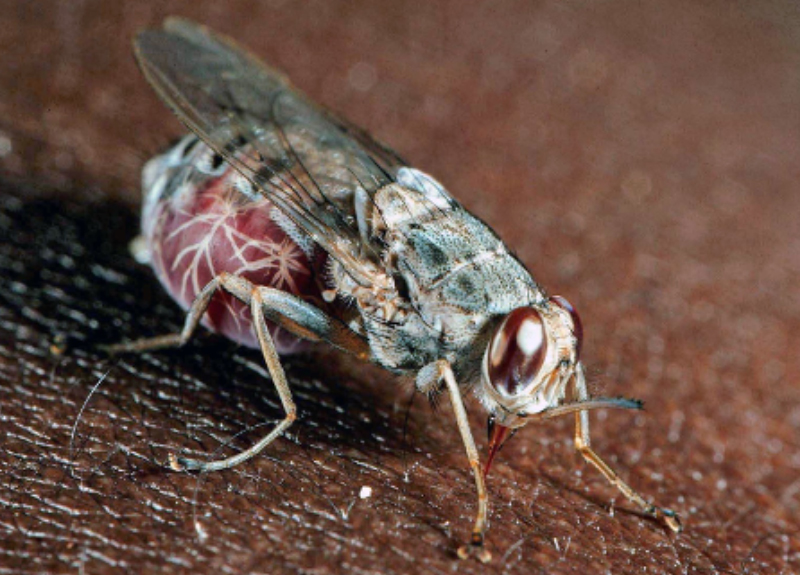Insect of the Month (October): Tsetse fly, Glossina morsitans
Tsetse flies occur only in Africa and are found in 38 countries where they transmit African trypanosomes, parasites that cause nagana in cattle and sleeping sickness in people. African animal trypanosomosis (nagana) costs the continent in excess of 10 billion USD annually in part because of its impact on loss of farming. Tsetse flies have a unique biology shared only with a few other insects – they do not lay eggs like other insects and give birth to one live larva at a time. Once a larva is released onto the soil, its burrow into the ground and change into a hard-cased pupa within a few minutes. It will emerge as an adult after three weeks and live for up to four months under ideal conditions. Both male and female tsetse flies feed only on blood, and either acquire and transmit trypanosomes as they feed. One of the most effective tools to control tsetse flies is the ngu trap, developed by icipe scientists in the 1980s. By studying the ecology of tsetse flies, icipe scientists have also developed a repellent blend of compounds based on waterbuck scents, which are effective in keeping tsetse flies away from livestock.


